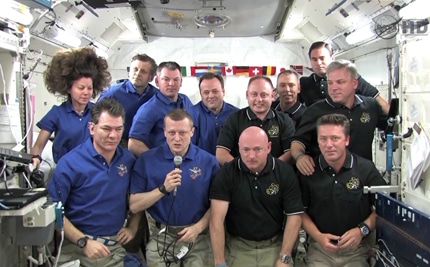The test lasted about two hours and after the results are analyzed at the control center, NASA will make a decision on what to do regarding the eight problematic areas where tiles fell or were damaged

STS-134 mission personnel finished a particularly productive day inside the station and began preparations for the second spacewalk scheduled for today (Sunday).
Among other things, members of the shuttle Endeavor team performed an in-depth inspection using laser systems mounted on the tip of the shuttle's robotic arm to take pictures and collect laser data. The task took about two hours. The high-resolution images were of course transmitted to Earth and they will be examined in depth at NASA's control center in order to see what exactly happened at the eight sites in the shuttle's heat shield where the heat shield tiles fell off or at least broke.
A decision will then be made as to whether the damage can be repaired and the astronauts will be sent on a spacewalk to carry out the repair.
Meanwhile, Drew Feustel and Mike Fink reviewed the procedures and gathered the tools for today's spacewalk. They will camp in the Quest airlock overnight to get used to the nitrogen-free atmosphere.

4 תגובות
You did not inform my father about the second space walk
To this day I have not been able to understand this tendency of the tiles to fall in almost every flight, I do not understand connecting them to a spaceship with rock? Why is it so difficult to fix them properly to the body of the spaceship? (with screws, connections, something...)
As long as it ends well...
My father will correct the 27th team not the 26th